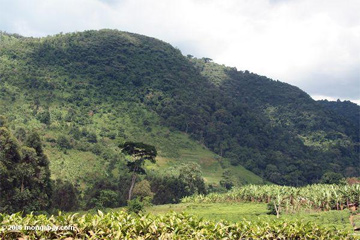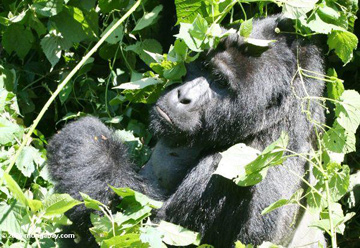Parks help people to the detriment of biodiversity, suggests study
Parks bring benefits to people, may hurt wildlife, suggests study
mongabay.com
July 3, 2008
The establishment of nature reserves in Africa and Latin America has been a boon to human settlement but comes at a cost to biodiversity, suggests a new study published in the journal Science.
Analyzing 306 rural protected areas in 45 countries in Africa and Latin America, George Wittemyer and colleagues found that the rate of human population growth along the borders of reserves was nearly twice that of neighboring rural areas.
“The findings counter the perception that park creation comes with high costs and few benefits to marginalized rural populations who lose out when conservation areas restrict their access to traditional lands and natural resources,” said Wittemyer, a UC Berkeley post-doctoral researcher.
“If these protected areas are a detriment to local livelihoods, we should see little or negative population growth at their borders,” said Brashares, an assistant professor of environmental science, policy and management at UC Berkeley. “Instead, people consistently move closer to them.”
 The boundary of Uganda’s Bwindi Impenetrable Forest. Tea plantations, cane fields, and tourist lodges are just meters from critical gorilla habitat |
Critics of protected areas say that the 500 percent increase in land designated as protected over the past 30 years has displaced tens of millions of people in developing countries, creating a class of “conservation refugees”. The new research seems to indicate this is not the case, finding demographic evidence that rules out the possibilities that the higher rates of human settlement around parks resulted from “leakage” from within parks or park-induced poverty. Instead the authors report a correlation between population growth near protected areas and the amount of funding countries received from the Global Environment Facility (GEF) for conservation-related projects. Population growth was also higher near protected areas that support greater concentrations of employees. The results suggest well-funded conservation areas bring economic benefits to local populations.
“This study highlights that conservation activities can and do have positive impacts for the local communities where they take place,” said Wittemyer. “Our results indicate that the economic and ecological benefits of living near protected areas outweigh the costs typically attributed to such proximity.”
“Concerns about park creation and social injustice date back to the days of colonialism, when many reserves started as hunting grounds for the elite,” said Brashares. “That history influences current attitudes toward the establishment of conservation areas, with suspicions that the unprecedented current rate of park creation signals an era of neocolonialism. A study like ours can’t consider or dismiss injustices of the past, but it suggests parks today are perceived by local people as areas of opportunity.”
Implications for wildlife and natural resources
Paradoxically the research suggests that the success of conservation areas in attracting human settlers may be detrimental to the biodiversity the reserves aim to protect. As populations on the margins of protected areas increase, so does pressure on natural resources including wildlife, agricultural land, and timber and other forest products.
 Silverback gorilla in Uganda’s Bwindi Impenetrable Forest. |
“Along with economic incentives provided through targeted donor funding, many parks are hotspots for ecosystem services and goods, such as open water, good soils for agriculture, bushmeat, fish and timber that increasingly are found in few other places,” said Brashares.
The researchers indeed found that deforestation rates were higher near protected areas where human population growth was the highest, suggesting that “current conservation efforts may achieve poverty alleviation at a direct cost to biodiversity protection.”
To counter this outcome, the authors recommend better planning to ensure that human populations settle away from sensitive reserve boundaries. The establishment of buffer areas could relieve some of the pressure on conservation areas.
“Clearly, coupling human development goals with biodiversity conservation is not a simple remedy to poverty or biodiversity loss,” said Wittemyer. “Such a marriage necessitates careful planning and forward thinking. This might entail implementing relatively simple policies like locating development projects in regions where human pressures will have less impact on biodiversity rather than placing them directly on the edge of the parks.”
“For protected areas to be sustainable and effective, a balance must be struck between benefits to local communities and the goals of biodiversity conservation,” said Brashares. “Instead of building new roads or schools and clinics near a park border, consider adding that infrastructure in the communities where people already live. Such actions can redirect the incentives that drive human population growth near park edges while still aiding local communities.”
G. Wittemyer, J.S. Brashares, P. Elsen, W.T. Bean, A. Coleman and O. Burton (2008). Accelerated Human Population Growth at Protected Area Edges. 4 JULY 2008 VOL 321 SCIENCE














